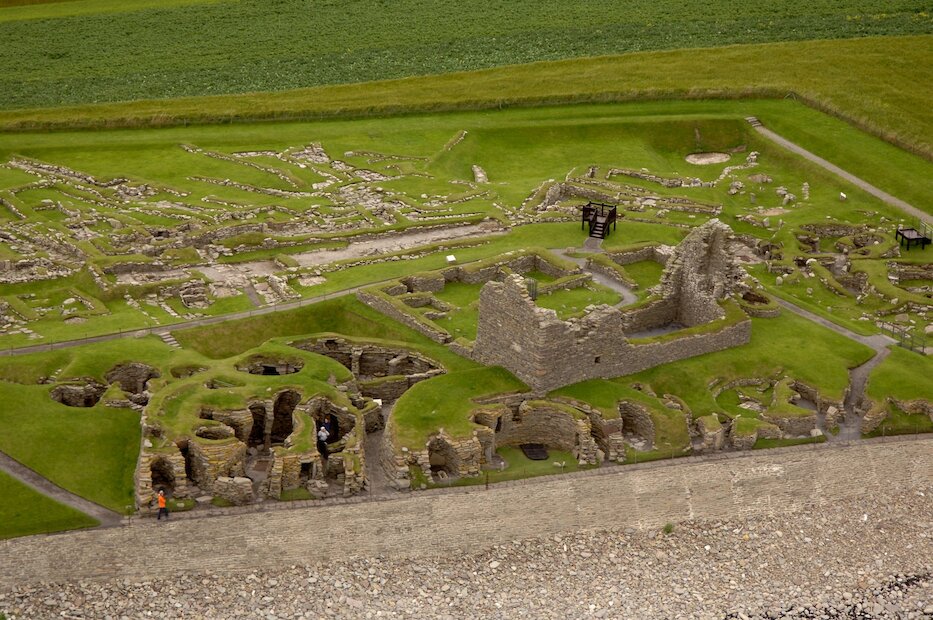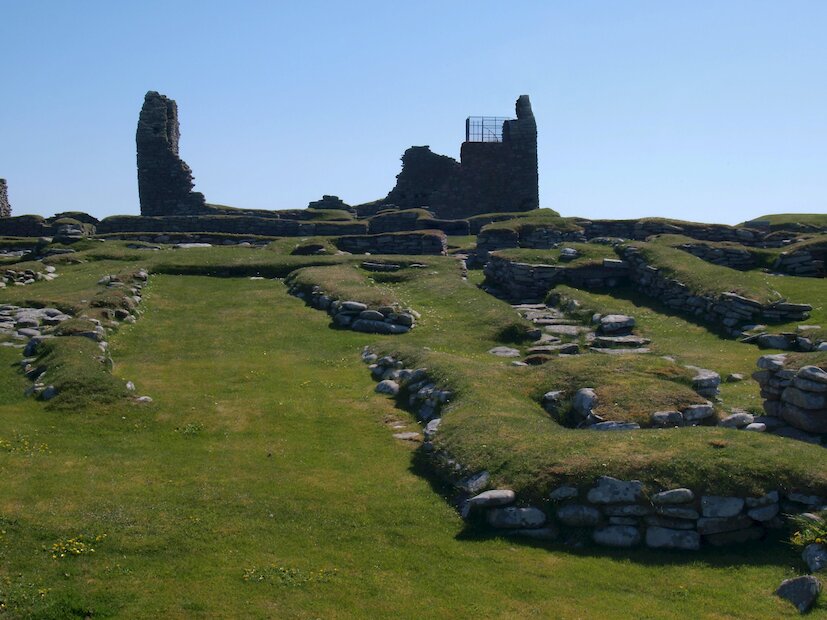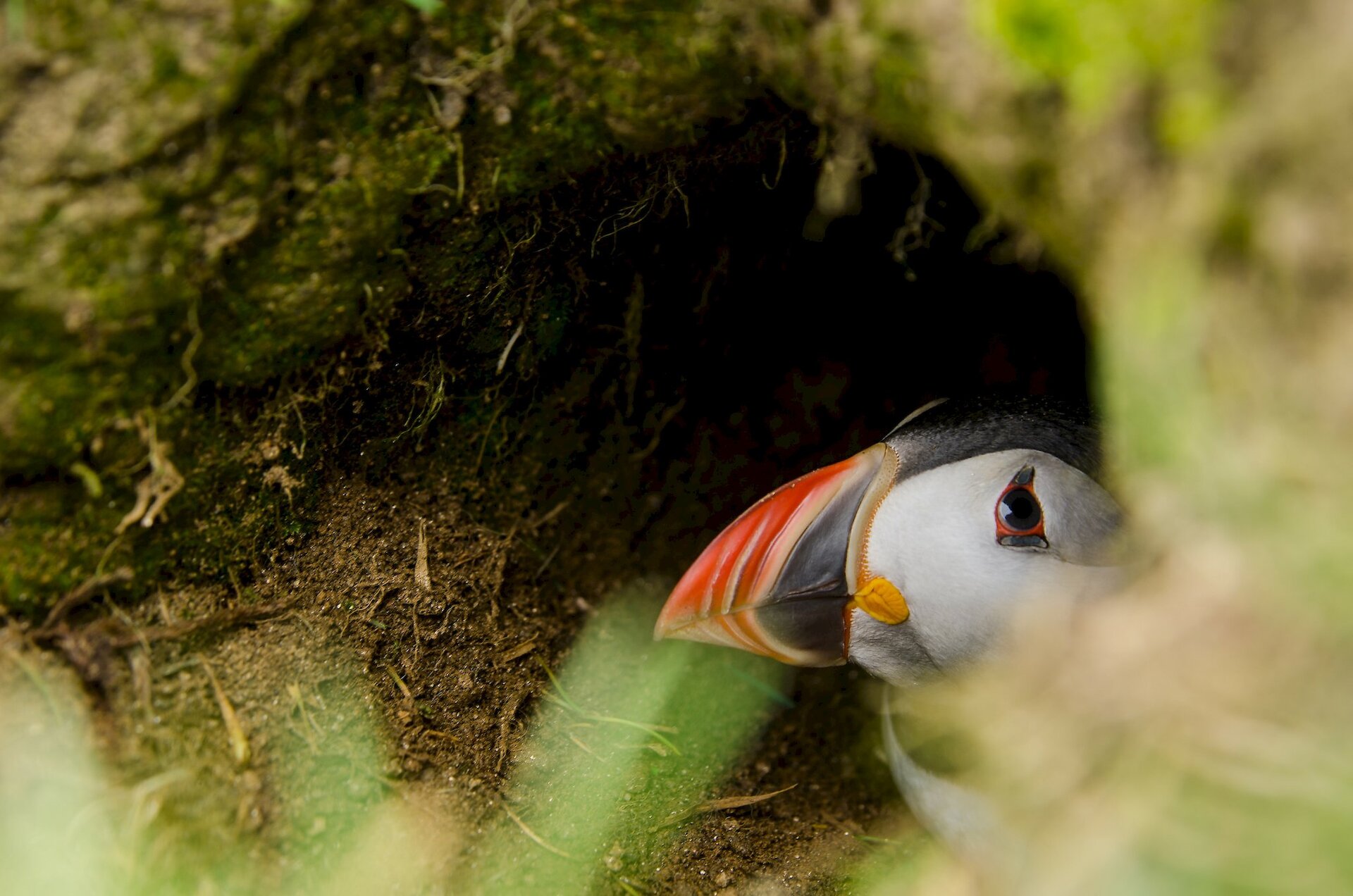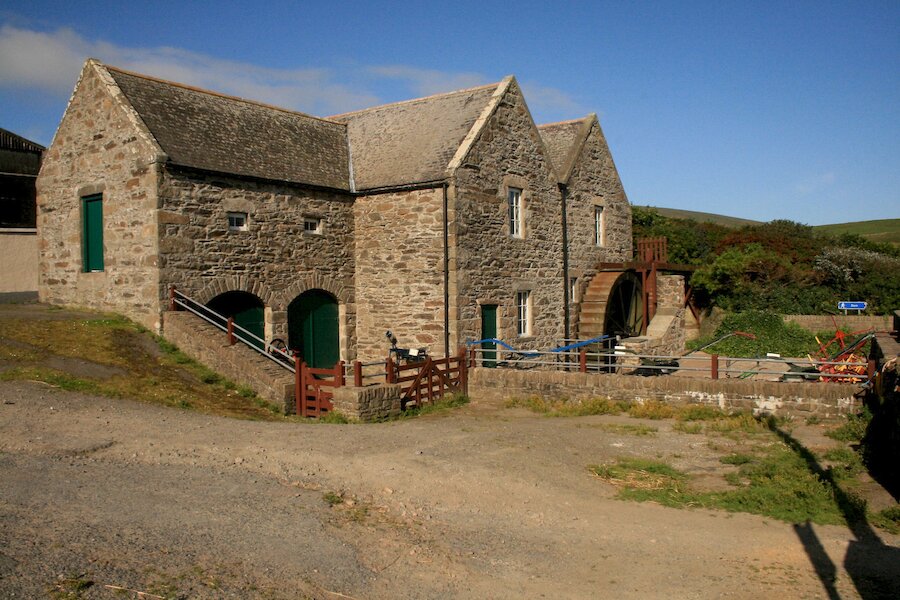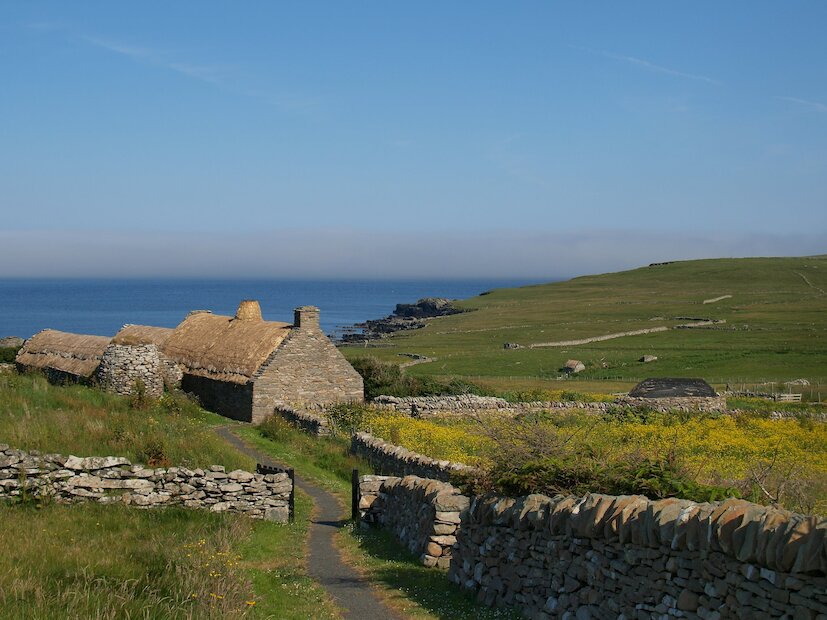There is a three mile section on the A970 before the route takes a diversion towards Boddam and passes The Croft House Museum - a restored cottage which depicts a typical mid ninteeenth century Shetland croft house.
The route continues on the west side of the A970 on minor roads with views to Loch of Spiggie and the Ward of Scousburgh. On the approach to Ringasta the route takes a sharp turn right towards Spriggie. Situated just over one mile off the route is Quendale Mill. This powerful water mill was a labour-saving revolution for farmers and crofters in the late 1860s, replacing traditional ‘clickmills and hand querns for grinding cereals. Beautifully restored, the mill now houses a visitor centre with an exhibition of old farming methods and croft implements.
Loch of Spiggie is an RSPB reserve for wildfowl. In late autumn hundreds of migrating Whooper Swans and Greylag Geese from Iceland pass through here, while in summer you will see Arctic Terns and Great Skuas bathe in the shallows. Nearby, Spiggie Beach makes a popular and sheltered rest stop – there is a surfaced road signposted to the beach on the north shore of the loch.
The flat section around the loch ends with a short climb to South Scousburgh, where a turn to the right brings the east coast back into view. After rejoining the A970 at Boddam, there is a 6½ mile ride directly south back to Sumburgh Head.


